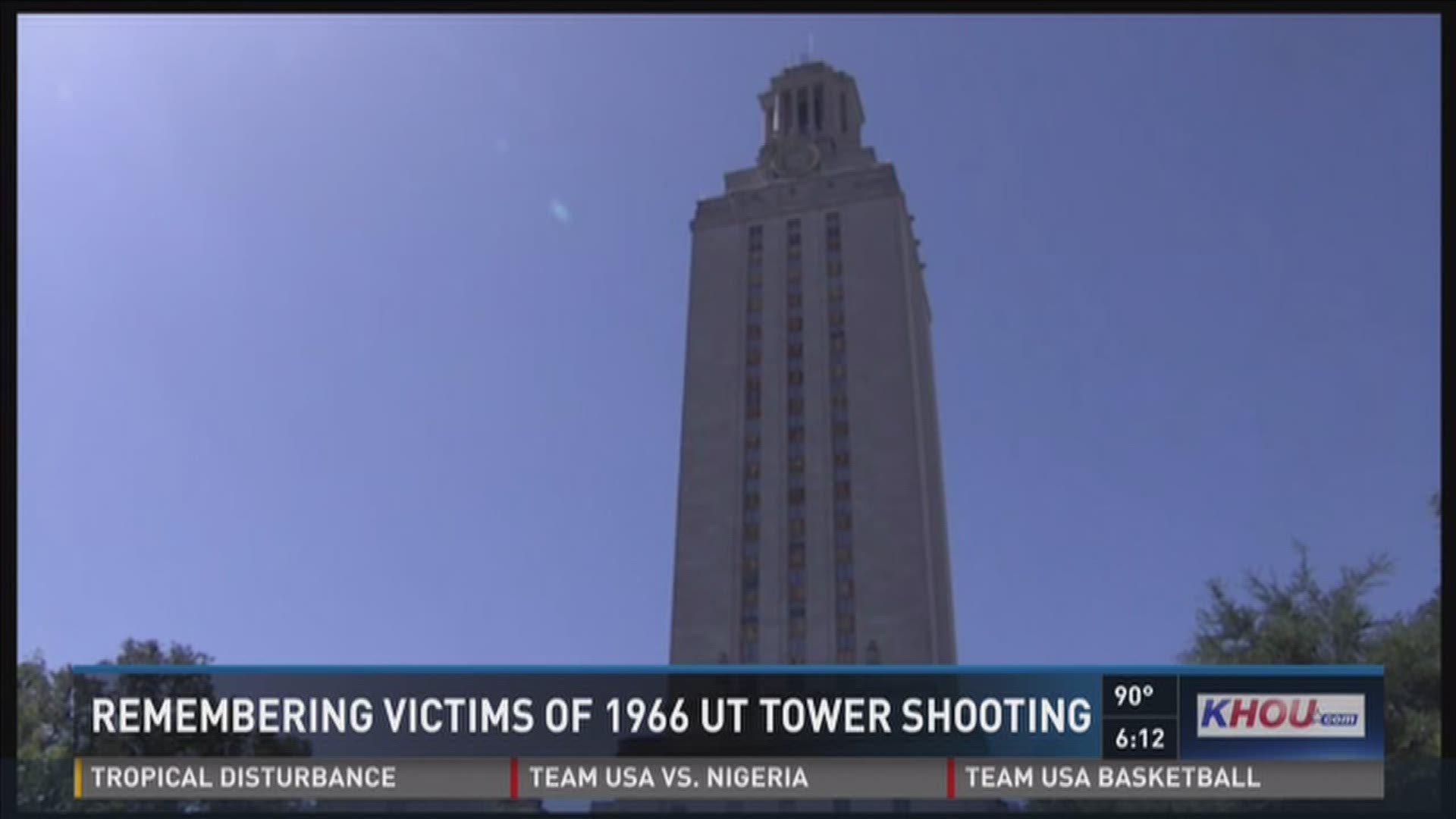AUSTIN, Texas – The 50th anniversary of the first mass shooting on a college campus in the United States coincides with the implementation of new rules to allow concealed handgun license holders to carry handguns on public college campuses in Texas.
But at the University of Texas, the clock tower will remain off limits to armed citizens. Fifty years later, the memories are still too painful and the death toll of a deranged gunman now etched in stone.
Survivors of the Aug. 1, 1966 massacre gathered at 11:48 a.m. Monday, the exact time the 96-minute shooting spree began. A 25-year-old engineering student and Marine sharpshooter who had bragged to a friend about how safe and protected a sniper’s nest the tower could possibly be, killed his mother and his wife, then hauled a cache of weapons to the top of the tower, killing those who got in his way before turning the campus into his own personal shooting gallery. He was eventually killed by police officers and an armed citizen who cornered the gunman who was also taking fire from citizens armed with their own rifles on the ground.
50th anniv of UT Tower shooting to honor 17 victims and the UT survivors who fought back against gunman @KHOU pic.twitter.com/xp0gk6MsOD
— Kevin Reece (@KReeceKHOU) August 1, 2016
A bagpiper led a procession to the Tower Garden on the north side of the tower Monday to rededicate the memorial first installed in 1999, but now marked with a boulder of pink Texas granite that bears the names of the 17 victims, including the gunman’s wife and mother and “Baby Boy Wilson” – the unborn child of Claire Wilson James, who survived the shooting but who also lost her boyfriend that fateful August day.
Monday she asked the assembled crowd of several hundred to make a vow “to treasure the ones we walk with right now each moment.”
“In one instant you went from that quiet enjoyment to a cauldron of chaos,” said Houston financial planner and shooting survivor Bob Higley. He was a 19-year-old student, who along with classmate, Cliff Drummond, narrowly avoided the gunfire and tried to drag the wounded to safety. Even 50 years later, Higley vividly remembers the victim they found, lifeless, leaning up against a parking meter pole.
“And it was very apparent that he was mortally wounded,” he realized after they carried him to car that rushed him to a hospital. Higley found out years later the man was Paul Bolton Sonntag, one of the 17 who did not survive.
“It was unthinkable, not capable of getting your mind around the thought in 1966 that someone would go to the Texas Tower, take up a position and begin firing on student, faculty, staff, anyone meandering the university,” Higley said. “It’s a part of everybody who was there. There’s not a person who was there that day in all of the chaos and the heat and the noise and the fear level who doesn’t remember where they were exactly the moment. They either heard the first shot or heard about the first shot.”
“I didn’t hardly make it into the stairwell and he yelled back, ‘There’s bodies in the stairs, bodies in the stairs,’” said Houston defense attorney Herb Ritchie, who was a student on the 26th floor of the tower that morning helping a professor with a research project. He, along with seven other people, remained trapped one floor below the gunman for the full hour and a half before the siege ended.
UT Tower clock stopped at 11:48am to commemorate start of 1966 shooting spree and community that fought back @KHOU pic.twitter.com/wkdJjdu12A
— Kevin Reece (@KReeceKHOU) August 1, 2016
“I don’t think you ever totally get over that. You just handle it as best you can,” Ritchie said.
At the Monday event where they rededicated the Tower Memorial, the crowd also applauded the four surviving police officers who helped end the gunman’s reign of tower that morning. And Bob Higley reminded us this isn’t about memorializing the work of a madman in a tower—it’s about remembering the towering heroism of people fighting back.
“You can’t help but marvel at how that community responded in ’66,” he said, explaining how police officers and armed citizens alike fought back and how students, faculty and Austin residents rushed to rescue survivors.
“That’s what I’m proud of,” Higley said. “We got it right. We didn’t retreat. And we didn’t yield and we didn’t cower. And we’ll put up a memorial. But I think the greatest memorial is that we stood taller than the guy in that tower.”
And now a monument to the victims, also a monument to that towering heroism, is a permanent part of the UT campus.

